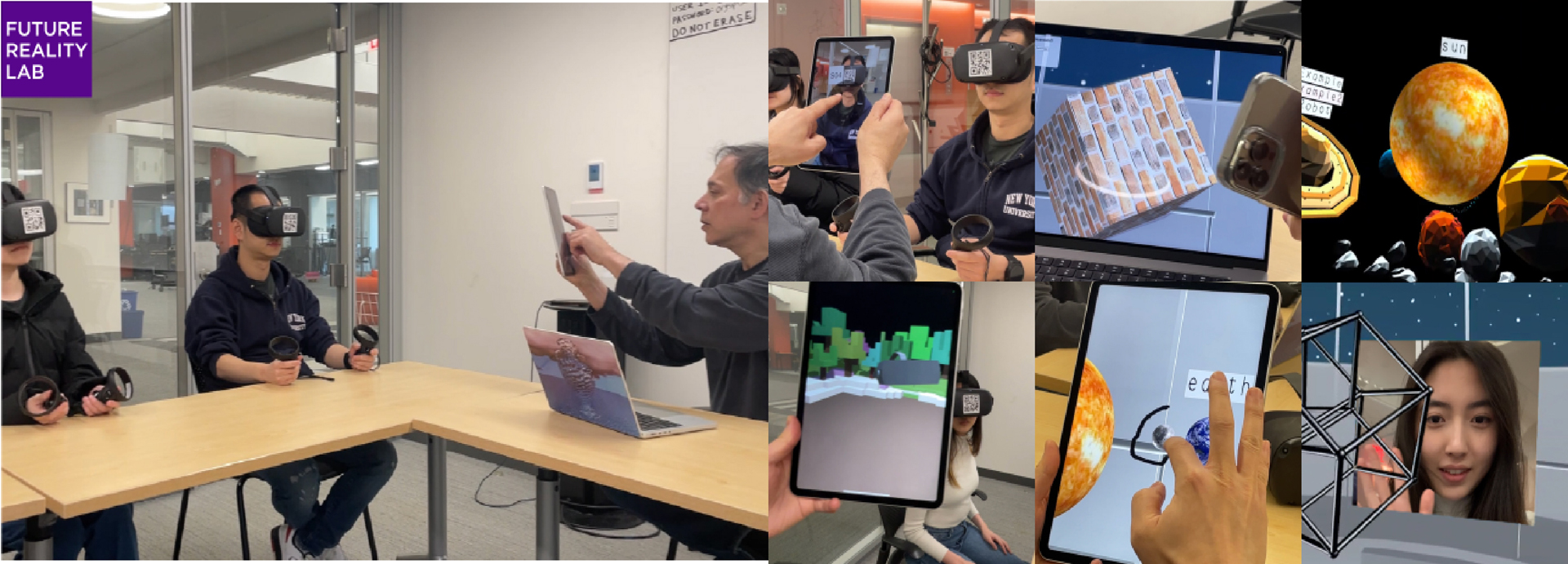“Asymmetrical VR for Education” by Wang, Wang and Perlin
Conference:
Experience Type(s):
Entry Number: 03
Title:
- Asymmetrical VR for Education
Presenter(s):
Description:
In collocated VR classes, instructors need to guide their students, while also remaining aware of the physical environment in order to ensure students’ safety. It is hard to do both simultaneously.
We present a system that utilizes hand-held devices for non-VR instructors, enabling them to explore VR content and interact with students who are fully immersed in VR. The instructor can observe the VR environment or switch between different students’ first-person views by using commonly available hand-held devices, such as smartphones and tablets. The instructor can also use hand-held devices to interact with the VR world itself.
The students can see the real-time video stream of the physical environment as well as a video stream of the instructor. The system enables seamless communication and collaboration, thereby helping to create a better and richer educational experience for VR classes.
References:
- Balasaravanan Thoravi Kumaravel, Cuong Nguyen, Stephen DiVerdi, and Bjoern Hartmann. 2020. TransceiVR: Bridging asymmetrical communication between VR users and external collaborators. In Proceedings of the 33rd Annual ACM Symposium on User Interface Software and Technology. 182–195.
- Keru Wang, Zhu Wang, Karl Rosenberg, Zhenyi He, Dong Woo Yoo, Un Joo Christopher, and Ken Perlin. 2022. Mixed Reality Collaboration for Complementary Working Styles. In ACM SIGGRAPH 2022 Immersive Pavilion. 1–2.
- Zhu Wang, Liraz Arie, Anat V Lubetzky, and Ken Perlin. 2021. VRGaitAnalytics: Visualizing Dual Task Cost for VR Gait Assessment. In Proceedings of the 27th ACM Symposium on Virtual Reality Software and Technology. 1–10.





